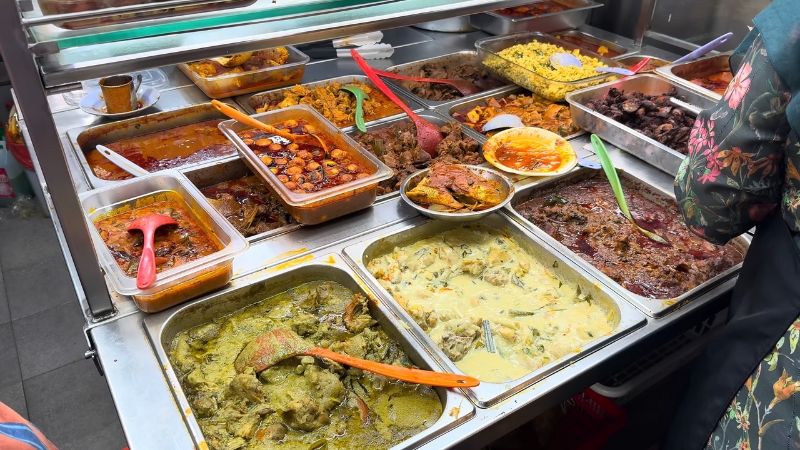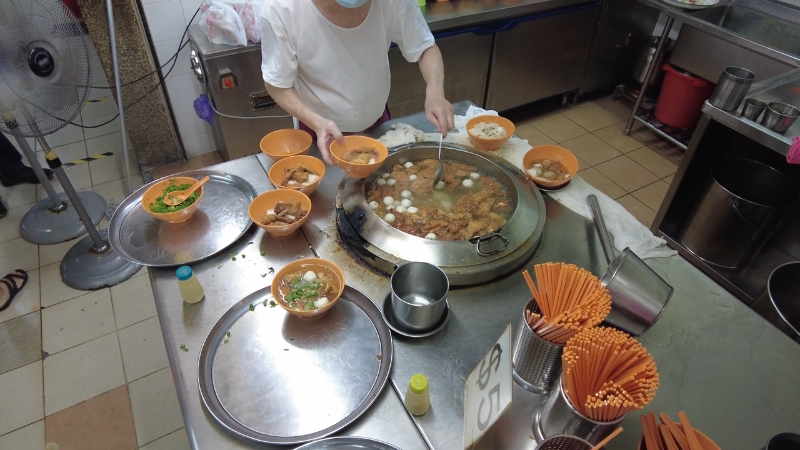Singapore is famous for hawker food, but the most underrated flavors in the country sit quietly inside wet markets, often ignored by tourists who stay in polished food courts.
The concrete answer is simple: wet markets offer the most authentic, old-school Singapore dishes that never make it to trendy cafes, and some of the best meals I have ever eaten in the country came from these stalls.
Many of these foods survive only because a handful of older vendors still prepare them in the original style. When someone wants to taste Singapore as locals know it, wet markets are the only place where that can happen.
I have spent many early mornings eating my way through markets from Geylang Serai to Tiong Bahru. The mix of fresh groceries, chatter, heat, and steam gives the food an energy that cannot be replicated anywhere else.
The vendors do not cook for Instagram. They cook for the uncles and aunties who come every day, and that changes everything about how the food tastes.
Why Wet Market Street Food Hits Differently

Wet markets start early, usually before dawn, so food vendors prepare dishes the moment fresh ingredients arrive. Fish is cut on the spot, vegetables come directly from nearby farms, and spices are blended by hand.
The flavors are sharper, the textures feel more natural, and the pricing stays incredibly fair because the environment is built around everyday locals, not tourists.
The atmosphere also plays a role. You eat in real Singapore, surrounded by baskets of produce, butchers slicing meat, and morning families negotiating for prawns or herbs.
That makes the food grounded, honest, and intensely flavorful.
1. Teochew Porridge with Pickled Mustard Greens
View this post on Instagram
This dish looks simple at first glance, but wet markets do it in a way restaurants rarely match. The porridge is watery, soft, and intentionally plain so it can carry the salty and sour notes of the preserved vegetables.
Why It’s Underrated
Tourists often skip it because it appears too humble, but in markets, it becomes a subtle, comforting breakfast made with perfectly balanced pickles.
Flavor Profile of Proper Teochew Porridge
Element
Description
Texture
Soft, watery, smooth
Saltiness
Low in porridge, medium from mustard greens
Sourness
Gentle, refreshing
Heat
Usually, none unless you add sambal
Best Time to Eat
Early morning, when it is freshest
2. Wet Market Curry Noodles

Curry noodles in markets are richer than typical versions because vendors make the curry paste in small batches. When I first tried one in Bendemeer Market, the auntie laughed at how quickly I finished the bowl.
The broth had layers: coconut sweetness, chili heat, and the unmistakable fragrance of galangal and curry leaves pounding by hand.
Why It’s Underrated
Most visitors head straight to laksa, so curry noodles often sit unnoticed. Yet these bowls are thicker, warmer, and more soulful.
What Makes Market Curry Noodles Different
- Fresh homemade curry paste
- Hand-pressed tofu puffs are soaked in broth longer
- Yellow noodles are delivered daily from local makers
- Chili oil ladled directly from the pan
3. Glutinous Rice with Chinese Sausage
@daigasikfaan Ep 4: OnlyFaan 🍚 – Chinese Sausage Sticky Rice (臘味糯米飯) Full recipe on my blog daigasikfaan.co search “chinese sausage sticky rice” #stickyrice ♬ original sound – Karen
One of the softest, most aromatic breakfasts in Singapore, this sticky rice is steamed in large bamboo baskets. Vendors drizzle fried shallot oil across the top, which adds a warm, savory note that sticks with you the entire day.
Why It’s Underrated
Hawker centers sometimes offer versions that are drier, but wet markets usually nail the moisture and depth because the rice has been soaking for hours before steaming.
Wet Market Glutinous Rice Breakdown
Component
Purpose
Sticky Rice
Base with natural sweetness
Chinese Sausage
Savory and smoky contrast
Fried Shallots
Crunch and fragrance
Soy Drizzle
Adds umami
White Pepper
Gentle heat
4. Fishball Noodles Made with Morning-Caught Fish

The markets that sit close to fishing supply chains, like Chia Keng Market, serve fishballs that bounce in a way frozen versions never do. The texture is springy and slightly sweet.
You immediately taste freshness because vendors grind the fish in-house before rolling the balls by hand.
Why It’s Underrated
Fishball noodles are common across Singapore, but handmade morning fishball noodles are becoming rare. Younger generations are not taking over these stalls, so the wet market versions are treasures.
A Small First-Person Note
The first time I watched a stall owner roll fish paste into perfect spheres with practiced motions, it felt like watching a skill that should belong in a museum.
She told me she learned the technique from her mother, and her mother from hers. I finished the bowl, knowing I had eaten something that may not exist forever.
5. Malay Kuih Fresh from the Morning Steamers
Kuih stalls in wet markets offer a rainbow of soft, sweet, coconut-based snacks that disappear fast.
Kuih lapis (layer cake), ondeh ondeh (pandan balls filled with molten gula melaka), and seri muka (glutinous rice topped with pandan custard) taste softer and more fragrant here than in supermarkets.
Why It’s Underrated
Tourists go for kaya toast, so kuih rarely gets attention, even though it is fresher and more flavorful in markets.
Popular Kuih and Their Textures
Kuih
Texture
Flavor
Onde Onde
Chewy, soft
Coconut, caramel-like sugar
Kuih Lapis
Firm layers
Slightly sweet, buttery
Seri Muka
Sticky base, silky top
Pandan and coconut
6. Nasi Lemak Wrapped in Banana Leaves

Wet market nasi lemak comes wrapped tightly in warm banana leaves. The sambal tends to be smokier than restaurant versions, often cooked for hours using dried chilies and anchovies.
The rice is jasmine or basmati infused with coconut milk that tastes fresh, not heavy.
Why It’s Underrated
Everyone knows nasi lemak, but the banana leaf wrap from markets brings out natural fragrance and gives the rice a gentle sweetness you cannot replicate with plastic packaging.
7. Fried Carrot Cake (Chai Tow Kway) Made with Handmade Radish Cakes

The radish cakes in wet markets are softer because they are steamed in huge trays every morning. When chopped and fried with garlic, eggs, and preserved radish, they create a satisfying, savory breakfast.
A Quick Note
Some of the best chai tow kway I have ever eaten was in Chinatown Wet Market at 6 AM while the steam was still rising from the trays.
Final Thoughts
If someone wants to feel the true roots of Singapore cuisine, wet markets are non-negotiable. The dishes above are not only underrated but at risk of fading as older vendors retire.
The authenticity comes from generational recipes, fresh ingredients, and the everyday rhythm of Singaporean life happening around you.
Everyone knows the city’s famous hawker dishes, but the real gems hide in the wet markets. They reveal the flavors locals grew up with, the textures people crave early in the morning, and the stories behind each stall.

